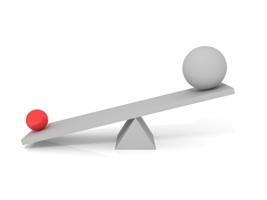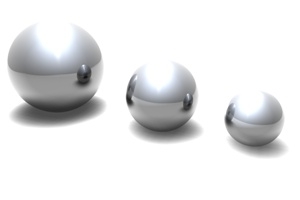The ovarian reserves
|
A woman's age is often the reason for seeking advice, both doctoral and others', when the question is whether there is "enough time" left or should a couple attempt to conceive. The age is surely important; however it is not the only factor. Some women are still highly fertile at age 41, while others are entering menopause already at 30. Therefore, we need means to determine the "reproductive age" of the woman. Hence, the combination of the chronological age of the woman and the individual "ovary age", otherwise known as the "ovarian reserves" is becoming more and more significant. Already there are some tests which can help to determine the ovarian reserves, even though those are not perfect yet: |
 |
FSH at Day 3
|
The follicle stimulating hormone (FSH) is, as the description hints, an important hormone for the development of the ovarian follicle. It is especially important in the beginning of the monthly cycle, in order to trigger the development of the follicle. Eventually, the ovarian reserves of egg cells are depleted because of the continuous usage of the follicles. More the follicles are used, the stronger is the increase in the FSH levels at the beginning of the month. Therefore, the FSH levels at the beginning at the monthly cycle can be used in order to determine the ovarian reserves.
|
 |
FSH levels in days 1-4:
- Below 10: normal FSH levels. A positive response to hormonal treatment is to be expected.
- 10 to 15: limited ovarian reserves. Limited response to the hormonal treatment can occur; the rate of successful manipulations is already diminished.
- 15 to 20: very limited ovarian reserves: the response to hormonal treatment is even more limited; the pregnancy and birth rate are strongly decreased.
- Above 20: depleted ovarian reserves: response to treatment very small or none. Hormonal treatment is not sensible anymore.
Important: Ovarian reserves correspond to the worst FSH levels. There is no sense, after measuring FSH of 18 units, to wait for a cycle of 9, in order to swiftly begin the treatment.
Regrettably, an FSH level below 10 does not mean that the treatment will be successful. Especially in advanced age, the pregnancy rate is limited independently of FSH.
The Anti-Müllerian hormone (AMH)
The Anti-Müllerian hormone (AMH) is produced in the granulosa cells. These cells build the follicle, in which the ovum matures. This hormone is produced mainly be the earlier stages of the follicle, before it was used up. Therefore, an evaluation of this hormone can be used to estimate the ovarian reserves. This hormone can be measured independently of cycle progression.
The number of follicles is determined from birth and decreases throughout the life span. The levels of AMH correspond to the amount of the still available follicles and also decrease with each passing year.
Borderline: if the AMH level decreases under 1 ng/ml (7 pmol/l), the ovarian reserves are limited.
Antral follicle count

Antral follicles can be identified, measured and counted at the beginning of the monthly cycle via ultrasound of the ovaries. They are 2-8 millimeters in size.
- 0 to 7: if there are only maximum seven antral follicles on both ovaries, this is an indication of strongly reduced fertility.
- 8 to 11: first signs of reduced ovarian reserves
- 12 to 14: there is no need to worry, however fertility may be reduced in foreseeable time
- 15 and more: excellent ovarian reserves, no reduction of fertility can be detected
For estimation of the antral follicle counts, a simple ultrasonic examination through the vagina is sufficient.
Ovarian volume
|
The ovaries diminish slowly in size with the using up of the ovarian follicles. This decrease of the ovarian volume can be used in combination with other tests (Antral Follicle Counts, Anti-Müller hormone, FSH day 3) in order to estimate the ovarian reserves. The examination is simple and is made, as with estimating the antral follicle counts, via ultrasound at the beginning of the monthly cycle. |
 |


